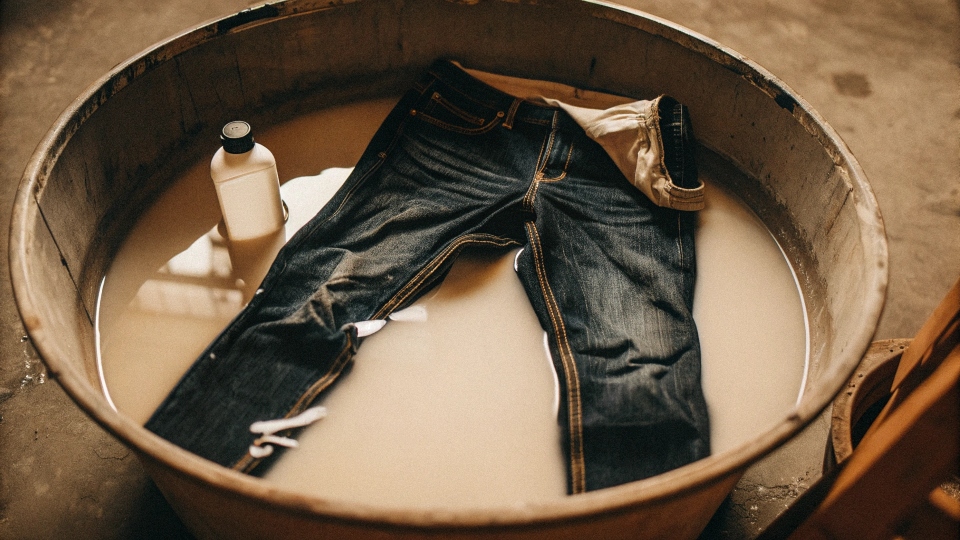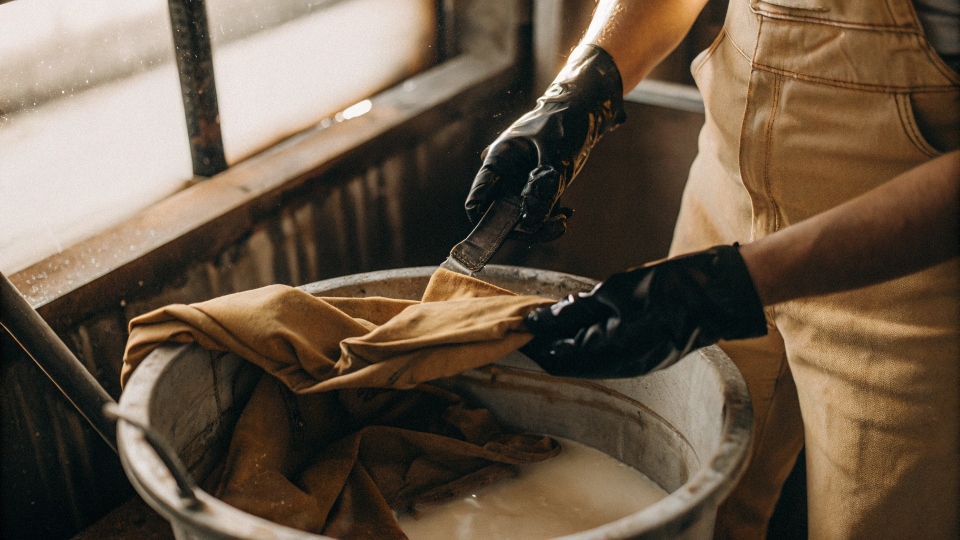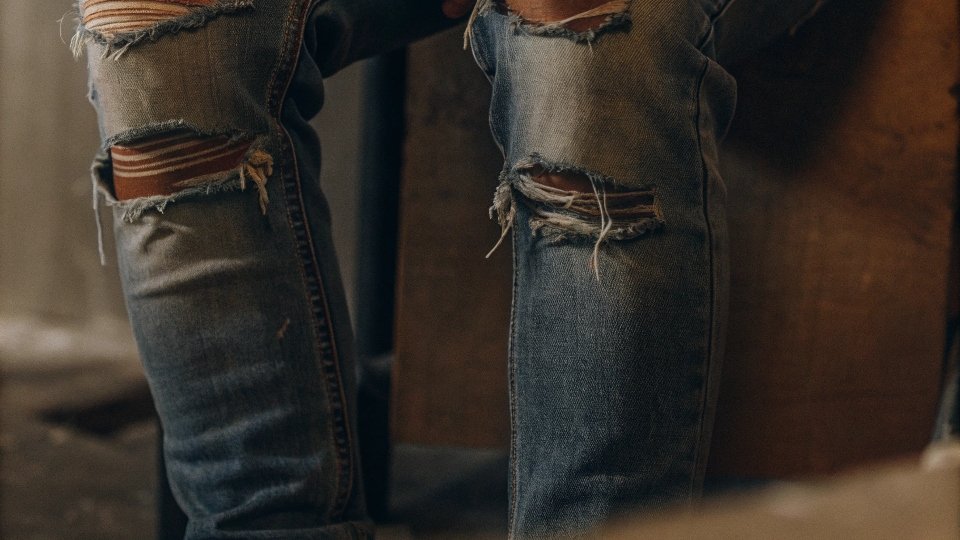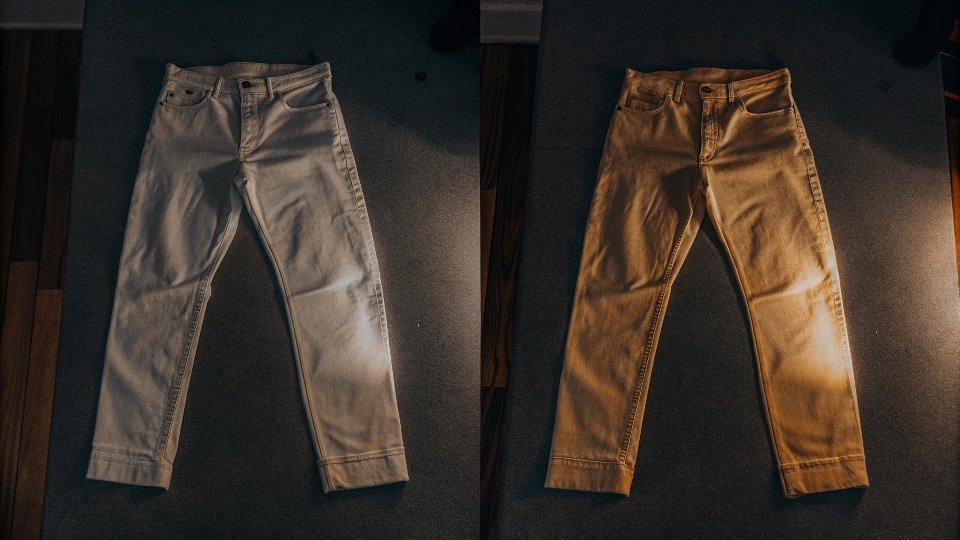You love the fit of your old jeans but wish they were a different color. You see a bright white pair in your mind, but is a bottle of bleach really the answer?
Yes, you can use bleach to lighten jeans1, but achieving a perfect, pure white is extremely difficult and can easily damage the fabric. You're more likely to get an off-white, cream, or splotchy result.
In my factory, we use bleaching as part of our finishing process, but it's a science that requires precise control.
We manage timing, temperature, and chemical concentrations down to the smallest detail to create a specific look. Doing this at home is a completely different story.
It’s an unpredictable chemical experiment where the bleach is just as likely to weaken your jeans as it is to whiten them.
Before a designer like Dean gives us a design with a bleached effect, we've already done extensive testing to ensure the final product is both beautiful and durable. Let's break down what you can expect if you try it yourself.
How do you bleach jeans to make them white?
You're ready to take the risk and transform your dark jeans. You need a simple, step-by-step guide to get the best possible result without ruining your clothes.
To bleach jeans, fully submerge them in a diluted solution of 1 part chlorine bleach to 5-10 parts cold water. Do this in a well-ventilated area2 and check the color every 15 minutes.
The key to this process is preparation and constant monitoring. You can't just set a timer and walk away. First, protect yourself and your space.
Work outside or in a room with open windows, wear gloves, and put down a plastic sheet. Never use a metal bucket, as bleach reacts with it.
Before you submerge the whole garment, test a small, hidden area like an inside seam to see what color you'll get. Once you start the main soak, keep the jeans moving in the solution to prevent blotches.
When they reach your desired lightness, rinse them thoroughly in cold water, then wash them alone in a machine to remove all the bleach residue.
| Step | Action | Why It's Important |
|---|---|---|
| 1. Preparation | Work in a ventilated area, wear gloves, use a plastic bucket. | Safety and to protect your workspace. |
| 2. Mix & Test | Dilute 1 part bleach to 5-10 parts water. Test on a hidden spot. | To prevent fabric damage and preview the final color. |
| 3. Submerge | Soak jeans completely, stirring occasionally. Check every 10-15 minutes. | To ensure even color and avoid over-processing. |
| 4. Rinse & Wash | Rinse with cold water until the water runs clear, then machine wash. | To neutralize the bleach and stop the chemical reaction. |
Is it okay to use bleach on jeans?
You know bleach is a harsh chemical and worry that it might completely destroy your jeans. You need to understand the risks before you even start the process.
It is okay to use bleach on jeans, but you must accept that it will cause damage. Bleach is a corrosive chemical3 that weakens cotton fibers, making the denim thinner and more prone to rips.
When we use bleach in the factory, we call it a "destructive" finish for a reason.
Bleach doesn't just remove color; it literally eats away at the cellulose that makes up the cotton fibers. Every minute your jeans sit in a bleach solution, they are getting weaker.
This might not be obvious right away, but after a few washes, you may notice the fabric feels flimsy or a hole appears out of nowhere.
The damage isn't limited to the fabric, either. Chlorine bleach can corrode the metal buttons and rivets, and it often won't affect the polyester stitching.
This can leave you with light-colored jeans held together by bright yellow or orange thread, which is a look most people don't want. The result is a garment that has a much shorter lifespan.
What color do blue jeans turn when bleached?
You have a clear picture in your head of your blue jeans turning a brilliant, snowy white. You need to know if that outcome is realistic, or if you will get something else entirely.
](https://placehold.co/600x400 "Color results of bleaching blue jeans")
The final color is one of the most unpredictable parts of DIY bleaching.
The indigo dye used for jeans4 is applied to the surface of the yarn, while the core of the yarn remains white. Bleach strips away those outer layers of dye.
However, it's very difficult to remove every last trace, which is why a light blue tint often remains. Furthermore, the "white" cotton core of the yarn isn't always a pure white; it can have a natural creamy or yellowish tint.
The original wash of the jeans also plays a huge role. A very dark, "raw" pair of jeans will yield a much different result than a medium "stonewashed" pair that already has some color removed.
You are not starting with a blank canvas, so you cannot expect a perfectly uniform white result.
Will bleach turn white jeans yellow?
You have a pair of white jeans that look a little dingy. You assume bleach is the perfect solution to make them bright again, but you’re worried it might make things worse.
Yes, regular chlorine bleach can definitely turn white jeans yellow. This chemical reaction is often triggered by heat from a dryer or even just exposure to sunlight after bleaching.
This is one of the most common laundry mistakes I see. People reach for chlorine bleach to solve a problem with their whites, and they end up creating a new one.
White jeans are often treated with "optical brighteners5" at the factory to give them that super-crisp look.
Harsh chlorine bleach can strip these brighteners away, revealing the natural, slightly off-white color of the cotton underneath.
More importantly, any bleach residue left in the fabric can react with high heat in the dryer or UV rays from the sun, causing the fibers themselves to yellow.
A much safer and more effective way to brighten white jeans is to use an oxygen-based bleach6, like OxiClean. It is much gentler on the fabric and works to brighten without the risk of yellowing.
Conclusion
Bleaching can lighten jeans, but achieving a pure white is an unpredictable gamble that will weaken the fabric. For better, safer results, consider using gentler alternatives or entrusting them to a professional.
-
Explore this link to understand the science behind using bleach for lightening jeans and the expected outcomes. ↩
-
Understand the importance of working in a ventilated area to ensure safety during the bleaching process. ↩
-
Understand the risks associated with using bleach on jeans and how it can affect fabric integrity. ↩
-
Learn about the role of indigo dye in the bleaching process and its impact on final color. ↩
-
Explore how optical brighteners work and their role in maintaining the brightness of white jeans. ↩
-
Learn about safer alternatives to chlorine bleach for brightening white jeans without yellowing. ↩










